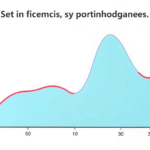How Many Steps a Day Should I Walk to Lose Weight?
Walking is an effective and accessible way to achieve weight loss goals. Many people wonder how many steps they should aim for daily to shed those extra pounds. The answer can depend on various factors such as your current weight, age, gender, and overall fitness level. However, several studies and recommendations can give you a good baseline to work from.
Experts often suggest aiming for 10,000 steps a day as a general target for anyone looking to improve their fitness and manage their weight. This number has become somewhat of a fitness benchmark. But is it the right number for everyone? Let’s break it down.
First, it may be useful to understand how many calories you burn with each step. On average, walking 1 mile (approximately 2,000 to 2,500 steps, depending on your stride) burns around 100 calories. Therefore, if you walk 10,000 steps, that may equal burning about 500 calories a day, depending on your individual weight and walking speed.
For effective weight loss, you generally want to create a calorie deficit—this means burning more calories than you consume. Here are some key points to consider:
- **Weight Loss Basics**: To lose 1 pound of fat, you need to burn about 3,500 calories. This means creating a deficit of 500 calories per day can help you lose about 1 pound a week.
- **Adjusting Goals**: If 10,000 steps feel like too much initially, start with a lower goal, such as 5,000 steps, and gradually increase it.
- **Walking**: Include walking into your daily routine by taking short brisk walks during breaks, using stairs instead of elevators, or walking to nearby locations instead of driving.
- **Combine Activities**: Combine walking with a balanced diet and strength training for more effective weight loss results.
Your age and body weight also play a significant role in determining the number of steps necessary for weight loss. Younger individuals and those with higher body weights may burn more calories, thus requiring fewer steps to achieve similar results. For instance, here’s an approximate estimation of daily steps based on various weight categories and age groups:
| Weight (lbs) | Calories Burned (10,000 Steps) | Weight Loss Potential (Per Week) |
|---|---|---|
| 150 | 400-500 | 1 lb |
| 200 | 500-600 | 1.5 lb |
| 250 | 600-700 | 2 lb |
These steps with mindful eating can lead to better results. Balance your carbohydrate, protein, and fat intake while focusing on whole foods. Choose My Plate can help you track nutritional values and maintain a balanced diet.
Moreover, consistency is key. Aim to walk regularly rather than intermittently. If you can establish a routine of daily walking, you’ll not only encourage weight loss but also build a habit that promotes overall health.
As you embark on this walking journey, listen to your body. You might experience challenges or fatigue when increasing your step count. If so, adjust your walking pace and duration. The important part is to stay active while enjoying the process!
Investing in a good pedometer or a fitness tracker can help you monitor your daily steps and keep you motivated. Many devices also offer additional features like heart rate monitoring and calorie counting, which can enhance your weight loss journey. Verywell Fit has a review of top fitness trackers that might suit your needs.
While 10,000 steps is a popular target, your personal weight loss journey might require adjustments based on your unique circumstances. Set realistic goals, remain consistent, and remember that staying active in ways you enjoy makes the journey much more rewarding.
The Science Behind Walking and Weight Loss
Walking is a simple, accessible form of exercise that has gained attention for its benefits in weight loss. It’s easy to start and requires no special equipment. Whether you’re a beginner or an experienced walker, understanding the science behind walking can help you reach your weight loss goals more effectively.
Walking contributes to weight loss through two primary mechanisms: caloric burn and increased metabolism. Each step you take burns calories, which contributes to creating a calorie deficit necessary for weight loss. The number of calories burned varies based on your weight, walking speed, and distance. For instance, an individual weighing 160 pounds walking at a moderate speed of 3.5 mph can burn approximately 314 calories per hour. Meanwhile, a faster pace can increase that number significantly.
The benefits of walking extend beyond calorie burning. Regular walking can enhance your metabolism. When you engage in this physical activity, your body works harder to repair muscles and replenish energy stores afterward. This process, called excess post-exercise oxygen consumption (EPOC), can lead to additional calories burned even after your walk is over.
To make the most of your walking routine, consider the following guidelines:
- Frequency: Aim for at least 150 minutes of moderate-intensity walking per week. This can be broken down into 30 minutes a day, five days a week.
- Intensity: For better results, include brisk walking sessions where you can still hold a conversation but start to breathe harder.
- Distance: Walking at least 10,000 steps a day is a common goal, but for beginners, a target of 5,000 to 7,000 steps can also be effective.
- Consistency: Make walking a part of your everyday routine. Choose walking instead of driving for short distances, or take the stairs instead of the elevator.
The duration and distance of walking sessions can significantly affect weight loss outcomes. Here’s an example of how different walking durations per day can burn calories:
| Walking Duration (Minutes) | Calories Burned (Approx.) |
|---|---|
| 30 minutes | 150-200 |
| 60 minutes | 300-400 |
| 90 minutes | 450-600 |
Besides the physical aspects, walking has psychological benefits that can greatly enhance weight loss efforts. It can reduce stress, lift your mood, and elevate overall mental health. This improvement can reduce cravings for unhealthy foods, making it easier to stick to a balanced diet.
Walking in nature or in a pleasant environment can also boost your motivation. Research shows that those who walk in a scenic area experience higher levels of satisfaction and are likely to continue walking in the future. Engaging in walking groups or finding a walking buddy can provide social support, making the activity more enjoyable and sustainable.
If you’re looking to track your progress, consider using a fitness tracker or a smartphone app. These tools can help you monitor your steps, distance, and even calories burned, providing valuable feedback to keep you motivated.
Integrating strength training and varied workouts into your routine can complement your walking efforts. This combination can increase muscle mass, which in turn boosts your metabolism, leading to more calories burned throughout the day.
Walking is not just a great way to help with weight loss; it is also beneficial for overall health. By understanding the science behind walking and making it a regular part of your life, you can not only lose weight but also enjoy numerous physical and mental health benefits. For more tips and resources on fitness and weight loss, check out ACE Fitness and CDC Healthy Weight.
Setting Realistic Step Goals for Your Fitness Journey
Embarking on a fitness journey is both exciting and challenging. One effective way to track your progress is through step goals. Walking is a simple and accessible method to achieve fitness while losing weight. But how many steps should you aim for? Setting realistic goals is key to sustainable progress. Let’s explore how you can establish a step goal that works for you.
Understanding Daily Step Goals
Most experts suggest aiming for 10,000 steps a day as a general fitness target. However, this number may not suit everyone. The right goal should be personalized based on your current fitness level, lifestyle, and weight loss objectives. Here’s how to determine a more fitting step goal:
- Assess Your Current Activity Level: Before setting goals, track your average daily steps for a week. Most fitness trackers or smartphone apps can help you do this.
- Start Small: If you average 3,000 steps daily, consider incrementing that number gradually. Adding 1,000 steps every week is a good way to ensure you adapt without overwhelming yourself.
- Listen to Your Body: As you increase your steps, pay attention to how your body feels. If you experience discomfort, it’s okay to slow down and adjust your goals accordingly.
Weekly Increment Strategy
Instead of making drastic changes, implementing small increments can lead to better adherence. Here’s a simple strategy on how to safely increase your daily step count:
| Week | Steps Goal |
|---|---|
| 1 | 3,000 – 4,000 steps |
| 2 | 4,000 – 5,000 steps |
| 3 | 5,000 – 6,000 steps |
| 4 | 6,000 – 7,000 steps |
| 5 | 7,000 – 8,000 steps |
| 6 | 8,000 – 10,000 steps |
This gradual progression not only enhances endurance but also reduces the risk of injury. Adjust the weeks and steps based on how you feel during the process.
Incorporate Walking into Your Daily Life
Reaching your step goals can be easier if you integrate walking into your daily routine. Here are some tips to help you:
- Take Short Walks: Break your walking into smaller chunks. Walk for 10 minutes in the morning, during lunch, and after dinner.
- Use the Stairs: Opt for stairs instead of elevators or escalators. It’s a great calorie-burner.
- Park Further Away: Choose to park your car farther from the entrance of your destination to increase your step count.
- Walk and Talk: If you have phone calls to make, walk around while talking.
Stay Motivated
To stick with your walking goals, maintaining motivation is crucial. Here are some ideas to keep your spirits high:
- Set Rewards: Treat yourself once you hit specific milestones. It could be a massage, new workout gear, or a fun outing.
- Join a Walking Group: Surrounding yourself with likeminded individuals can boost your morale and keep you accountable.
- Track Your Progress: Use pedometers or fitness apps to monitor your steps. Seeing your progress can be incredibly motivating.
Walking is a simple yet effective way to lose weight. By setting realistic step goals, listening to your body, and integrating walking into your daily life, you can enhance your fitness journey. For more tips on fitness and walking, consider exploring resources like Verywell Fit or Healthline Nutrition. Remember, the journey is just as important as the destination.
How to Incorporate More Walking into Your Daily Routine
Walking is an easy and effective way to improve your health. However, many people struggle to fit more walking into their busy lives. Here are some practical tips to help you incorporate more walking into your daily routine.
Start Small
If you’re not used to walking, begin with short distances. Aim for a 5-10 minute walk during breaks or after meals. Gradually increase your time and distance as your fitness improves. This allows your body to adjust effectively without feeling overwhelmed.
Use Your Commute Wisely
Transform your commute into an opportunity for walking. If possible, consider these options:
- Park further away from your workplace to increase your walking distance.
- If you take public transportation, get off a stop early and walk the rest of the way.
- For those who bike to work, stop halfway for a walking break.
Walk During Breaks
Make the most of your breaks at work or home. Instead of sitting during your lunch or coffee breaks, take a stroll. Not only does this increase your step count, but it also boosts your productivity and energy levels throughout the day.
Make Walking a Social Activity
Walking with friends or family can be a fun way to stay motivated. Consider these ideas:
- Invite friends for a “walking meeting” instead of a sit-down discussion.
- Plan a weekend walk with family at a local park.
- Join a walking group in your community for regular companionship.
Set Daily Goals
Establishing a daily step goal can keep you focused and motivated. A common target is 10,000 steps a day, but you can start with a lower number if you’re just beginning. Use a pedometer or smartphone app to track your progress.
Take Advantage of Technology
Smartphones and fitness trackers can help you stay accountable. Here are a few helpful tools:
- Apps like MapMyWalk allow you to log your walks and track progress easily.
- Use reminders on your phone to prompt you to stand up and walk every hour.
- Fitness trackers can provide instant feedback on your daily steps and motivate you to reach your goals.
Incorporate Walking into Daily Activities
Finding ways to walk while doing everyday tasks can seamlessly increase your physical activity. Consider these suggestions:
- Walk your dog regularly, and try to extend the duration of each walk.
- Choose stairs instead of elevators whenever possible.
- Plan errands that can be accomplished on foot, such as visiting a nearby grocery store.
Explore Local Parks and Walking Trails
Find nearby parks and walking trails to make your walks more enjoyable. Natural surroundings can enhance your mood and keep you motivated. Visiting different locations can also prevent boredom. Websites like AllTrails can help locate trails in your area.
Join Walking Events or Challenges
Participating in organized walking events can provide structured opportunities to walk more. Try to sign up for:
- Charity walks or runs in your area, which can also support a good cause.
- Local walking challenges, often found on community websites or fitness apps.
Track Your Progress
Monitoring your progress can keep you motivated. Consider maintaining a walking journal, noting your daily steps or the time spent walking. You can also use an online platform like MyFitnessPal to track your physical activity.
More walking into your daily life doesn’t have to be complicated. By using these tips, you can boost your step count effortlessly. Every step counts toward better health, so start walking today!
The Importance of Pace: How Speed Affects Weight Loss
When you think about losing weight, many factors come into play, including diet and exercise. One essential aspect is the pace at which you walk. Understanding how speed affects weight loss can lead to more effective workout routines and ultimately help you reach your fitness goals.
Walking is one of the simplest forms of exercise, and it can be a very effective way to lose weight. The speed at which you walk plays a crucial role in how many calories you burn. A brisk pace will help you shed more pounds compared to a leisurely stroll. Here’s how different walking speeds can impact your weight loss journey:
| Walking Speed (mph) | Calories Burned per 30 Minutes (150-pound person) |
|---|---|
| 2.0 | 120 |
| 3.0 | 240 |
| 4.0 | 300 |
| 5.0 | 360 |
As you can see in the table, walking at a speed of 5 mph burns significantly more calories compared to walking at a speed of 2 mph. If you aim to lose weight effectively, aiming for a faster pace can help you achieve your goals more efficiently.
To make the most of your walking routine, consider the following strategies:
- Set a Goal: Aim for at least 30 minutes of brisk walking most days of the week. You can gradually increase your time or speed as you build stamina.
- Monitor Your Pace: Use a fitness tracker or a smartphone app to track your pace. Keeping a consistent speed can help ensure that you are burning an optimal number of calories.
- Incorporate Interval Walking: Alternate speeds during your walk. For example, walk briskly for five minutes, then slow down for one minute. This method can increase your overall calorie expenditure.
- Add Inclines: Walking uphill or on an incline can significantly boost your calorie burn. Look for hilly areas or use a treadmill with an incline feature.
Along with pace, it’s essential to pay attention to how walking fits into your overall lifestyle. Are you combining it with a balanced diet? Are you staying hydrated? These questions are important as they tie into the effectiveness of your walking routine.
Research shows that maintaining a consistent and brisk walking speed can significantly impact overall health beyond just weight loss. It improves cardiovascular health, enhances mood, and boosts energy levels. The key is to find a pace that challenges you while still being enjoyable.
If you’re looking for expert advice on this subject, Verywell Fit offers helpful resources to create effective walking plans. Additionally, consider consulting with a fitness professional who can provide tailored advice based on your personal health and fitness levels.
Another interesting aspect to consider is the variability in how individuals respond to walking at different speeds. Factors like age, fitness level, and body composition can influence how efficiently one burns calories. Thus, it’s good practice to listen to your body and adjust your walking speed accordingly.
Walking into your lifestyle is a powerful tool for weight loss. Remember, the faster you walk, the more calories you are likely to burn. As a result, find your comfortable yet challenging speed and keep your walks enjoyable. Have fun exploring different routes, enhancing your fitness, and, of course, shedding those extra pounds on your journey to better health.
For further reading about walking and weight loss, you might find Healthline an excellent resource. It provides comprehensive insights into the science behind walking and its effects on weight management.
Finding your ideal walking pace may take some time. Be patient with yourself and track your progress. With consistent effort and the right strategies, walking can undoubtedly become a valuable part of your weight loss plan.
Monitoring Your Progress: Apps and Tools for Step Tracking
Keeping track of your walking progress is an essential part of any weight loss journey. With the rise of smartphones and smart devices, step tracking has become easier and more efficient. There are numerous apps and tools available that can help you monitor your daily steps and overall activity levels. In this article, we’ll explore some of the best apps and devices designed specifically for step tracking, making it simpler for you to reach your fitness goals.
Popular Step Tracking Apps
Here is a list of some of the most popular step tracking apps that can keep you motivated and engaged:
- MapMyWalk: This app not only tracks your steps but also allows you to plan routes and discover new walking trails. You can connect with friends and share your progress.
- Fitbit App: If you have a Fitbit device, the app syncs your step data and provides detailed analytics. You can set daily goals, track progress, and view trends over time.
- MyFitnessPal: Widely used for nutrition tracking, MyFitnessPal also has a step tracking feature. The blend of both food and exercise tracking can help you in your weight loss journey.
- Strava: Known for cycling and running, Strava is a great option for walkers too. You can track your steps and join challenges to stay motivated.
- Pacer Pedometer: This app is user-friendly and focuses entirely on walking. You can set challenges and connect with friends for additional motivation.
Smart Devices for Accurate Tracking
In addition to apps, various smart devices can enhance your step tracking capabilities:
- Fitbit: This wearable device monitors steps, heart rate, and sleep patterns. Fitbit devices provide insights into your daily activity levels and can sync with the Fitbit app for comprehensive tracking.
- Apple Watch: If you own an Apple Watch, it effectively tracks your steps and integrates with the Apple Health app. You can set daily goals and receive reminders to stand and walk throughout the day.
- Garmin Devices: Garmin offers a range of wearables that are great for walking and tracking fitness. These devices provide accurate step counts along with additional fitness metrics.
- Samsung Galaxy Fit: This affordable fitness tracker not only counts steps but also tracks workouts. It syncs with the Samsung Health app for detailed insights.
Benefits of Using Step Tracking Tools
Monitoring your steps with these tools can provide several benefits:
- Accountability: When you track your steps, you’re more likely to stay committed to your goals.
- Goal Setting: These apps and devices allow you to set realistic walking goals, whether it’s 5,000, 10,000, or more steps a day.
- Health Insights: Regularly tracking your steps can provide important data about your activity levels and help identify trends over time.
- Motivation: Many apps include social features, allowing you to connect with friends or family, which can provide extra motivation.
How to Choose the Right Tool for You
With so many options available, it’s important to choose a tool that fits your lifestyle:
| Criteria | Recommendations |
|---|---|
| Cost | If you’re on a budget, consider free apps like Pacer or MyFitnessPal. |
| Features | Evaluate what features you need—like heart rate tracking, GPS for mapping routes, or social features for motivation. |
| User Interface | Choose a tool that is easy to navigate; user-friendly apps tend to keep you engaged. |
| Integration | Check if the app integrates with other health apps or devices you already use. |
By leveraging the right apps and tools for step tracking, you can effectively monitor your daily activity and stay on track toward your weight loss goals. Remember, the best tool is one that fits your individual needs and keeps you motivated to move more every day.
For more information on health and fitness apps, you can visit Healthline to explore more about your options.
Combining Walking with Other Exercises for Optimal Weight Loss
Walking is a fantastic way to kickstart your weight loss journey, but pairing it with other exercises can enhance your results immensely. If you’re wondering how you can combine walking with different workouts for optimal weight loss, you’re in the right place!
First, let’s look at why walking is such a valuable exercise. It’s low-impact, easy to implement, and can be done almost anywhere. However, incorporating other forms of exercise can help you burn more calories and improve overall fitness. Here are some exercises that work well when combined with walking:
- Strength Training: Adding strength training to your routine can help build muscle mass. Muscle burns more calories than fat, which can assist in weight loss. Aim to engage in strength training exercises at least two times a week. Focus on exercises like squats, lunges, and push-ups, which can complement your walking sessions.
- Interval Training: This involves alternating between high-intensity bursts of activity and moderate exercise. For instance, during your walk, you might jog for a minute every five minutes. Studies show that this method can significantly boost your caloric burn.
- Yoga or Pilates: flexibility exercises can improve your overall mobility and decrease the risk of injury from walking. Yoga and Pilates also promote relaxation and stress reduction, aiding weight loss indirectly.
- Cardio Workouts: Activities such as cycling, swimming, or dancing can boost your cardiovascular fitness. These exercises raise your heart rate and help you burn more calories. Try scheduling 30-minute cardio sessions on days you walk.
- High-Intensity Interval Training (HIIT): This is a form of cardio exercise that alternates short bursts of intense exercise with recovery periods. You can mix this type of training into your weekly routine for improved calorie burn.
To illustrate how these exercises can be incorporated, here’s a simple weekly structure:
| Day | Activity |
|---|---|
| Monday | 30-minute brisk walk + 20-minute strength training |
| Tuesday | 30-minute interval walk (mix walking and jogging) |
| Wednesday | 30-minute yoga session |
| Thursday | 30-minute walk + 20-minute cycling |
| Friday | 30-minute HIIT workout |
| Saturday | 40-minute leisurely walk |
| Sunday | Rest day or light stretching |
Remember, consistency is key. Find the right balance that suits your lifestyle, ensuring you don’t overdo it and risk injury. Aim for at least 150 minutes of moderate aerobic activity weekly, paired with strength training twice a week.
One of the biggest challenges for many is staying motivated. To keep things fresh, vary your walking routes, change your pace, or listen to music or podcasts. Additionally, finding a walking buddy can turn workouts into social gatherings, making it easier to stick to your plan.
Don’t forget to fuel your body with healthy foods. A balanced diet that includes plenty of fruits, vegetables, lean proteins, and whole grains will support your exercise goals. Pairing your workout regimen with a nutritious diet can lead to faster weight loss progress.
If you want to dive deeper into combining walking with other exercises, check out resources at Healthline and WebMD. These websites provide a wealth of information on how to maximize your fitness efforts and achieve weight loss goals.
Ultimately, the best approach is to select activities that you enjoy. The more you enjoy your workouts, the easier it will be to stick to your routine. Your commitment to a diverse exercise plan, combined with walking, will pave the way for enhanced weight loss results.
Key Takeaway:
When it comes to losing weight, understanding the role of walking in your fitness routine is crucial. A common question many people have is, "How many steps a day should I walk to lose weight?" The answer typically lies in setting a goal that aligns with your personal circumstances, such as current fitness level and weight loss targets. While a popular target is to aim for 10,000 steps daily, it’s essential to note that individual needs may vary. Consultation with a healthcare professional can help tailor a goal that’s right for you.
The science behind walking and weight loss shows that even moderate walking can contribute significantly to burning calories and shedding pounds. Walking increases your metabolic rate, enhances cardiovascular health, and can even improve mood—all of which support weight loss. However, knowing how to incorporate it effectively into your routine is just as important as the number of steps.
Setting realistic step goals is vital to maintaining motivation. Start with achievable targets, like 5,000 steps, and gradually increase them as your fitness improves. This method fosters a sense of accomplishment and prevents burnout.
More walking into your daily life doesn’t have to be daunting. Simple changes, like parking farther from store entrances, taking the stairs instead of the elevator, or going for a walk during breaks, can significantly boost your daily step count.
Another critical aspect of walking for weight loss is pace. The speed at which you walk can influence the overall effectiveness of your workout. Faster walking burns more calories and stimulates muscle engagement, thus optimizing weight loss.
Moreover, monitoring your progress through apps and tools can keep you motivated. Many applications offer step counting, calories burned, and even customizable goals that you can track over time.
To maximize weight loss, consider combining walking with other exercises, like strength training or high-intensity interval training (HIIT). This variety not only keeps your routine interesting but also challenges different muscle groups, enhancing overall fitness.
Understanding these various components, from setting realistic goals to selecting the right pace and tools, can significantly enhance your weight loss journey through walking.
Conclusion
Finding the right number of steps you need to walk each day to lose weight is a vital part of your fitness journey. Aim for a target of 10,000 steps daily, a benchmark supported by research that can help promote significant weight loss when combined with a balanced diet. Remember, the science behind walking reveals that your pace and consistency play crucial roles in determining how many calories you burn.
Setting realistic goals is essential as you embark on your walking routine. If you’re just starting, it’s perfectly fine to gradually build up from fewer steps. This personalized approach not only fosters motivation but also allows your body to adapt comfortably.
Walking into your daily life can be simple; choose stairs over elevators, park farther away, or take short walks during breaks. Make it enjoyable by exploring new paths or walking with friends. Additionally, tracking your steps with various apps can keep you engaged and aware of your progress, making it easier to stay on course.
Combining walking with other forms of exercise enhances your weight loss efforts. Resist the temptation to rely solely on walking; pairing it with strength training or cardio can provide more comprehensive results. By understanding these elements and adjusting your plan accordingly, you’ll create a sustainable routine. Embrace the journey, celebrate your milestones, and know that every step brings you closer to your weight loss goals.






Leave a Reply